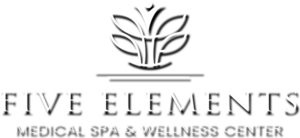Unlocking Your Youthful Glow: The Power of Botox & Dysport
Botox and Dysport have emerged as leading non-surgical treatments in the quest for youthful, radiant skin. These two neuromodulators have gained immense popularity for their ability to reduce the appearance of wrinkles and fine lines, offering a rejuvenated look with minimal downtime. This article delves into the power of Botox and Dysport, exploring their benefits, differences, and what to expect from these transformative treatments.
Understanding Botox and Dysport
Botox and Dysport are derived from botulinum toxin type A, a purified protein that temporarily relaxes facial muscles. By inhibiting the nerve signals that cause muscle contractions, these treatments effectively smooth out dynamic wrinkles formed by repetitive facial movements like frowning or squinting. While both serve the same primary purpose, subtle differences in formulation and diffusion can influence their effects.
The Benefits of Botox and Dysport
- Wrinkle Reduction: The most celebrated benefit of Botox and Dysport is their ability to diminish wrinkles. Commonly treated areas include the forehead, crow’s feet around the eyes, and frown lines between the brows.
- Non-Surgical Solution: Unlike facelifts or other surgical options, Botox and Dysport offer a non-invasive alternative. This means no incisions, stitches, or significant recovery time.
- Quick Procedure: Treatments typically take only 10-20 minutes, making them convenient for those with busy schedules.
- Minimal Downtime: With minimal restrictions, patients can resume normal activities immediately after treatment.
- Preventive Effects: Regular treatments can prevent the formation of new wrinkles, maintaining a youthful appearance over time.
Differences Between Botox and Dysport
While Botox and Dysport are similar, they have unique properties that make one more suitable depending on individual needs.
Formulation and Diffusion
Dysport has smaller protein molecules, which may allow it to spread more quickly in the treated area. This can be beneficial for larger areas like the forehead. Botox, however, tends to stay more localized, making it ideal for treating smaller areas or particular wrinkles.
Onset of Results
Dysport often shows results slightly faster than Botox, with effects visible in as little as 24 hours compared to Botox’s 3-5 days. This can be a deciding factor for individuals seeking quick results for an upcoming event.
Duration of Effects
Both treatments typically last 3-4 months, though some studies suggest Dysport may sometimes last a bit longer. However, individual results can vary based on factors like metabolism and lifestyle.
What to Expect During the Treatment
Consultation
The first step in the Botox or Dysport journey is consulting a qualified practitioner. During this session, the practitioner will assess your facial anatomy, discuss your aesthetic goals, and determine the appropriate treatment plan.
The Procedure
On the day of the treatment, the target areas will be cleaned, and a topical anesthetic may be applied to minimize discomfort. The practitioner injects small amounts of Botox or Dysport into the specified muscles using a fine needle. The number of injections will vary based on the treatment area and desired results.
Post-Treatment Care
After the procedure, patients are advised to avoid rubbing the treated areas and to stay upright for at least four hours. Strenuous exercise and activities that increase blood flow to the face should be avoided for 24 hours to prevent the toxin from migrating.
Potential Side Effects
Both Botox and Dysport are considered safe when administered by experienced professionals. However, some patients may experience minor side effects such as:
- Redness or swelling at the injection site
- Mild bruising
- Headache
- Temporary muscle weakness
Serious side effects are rare, but if the toxin spreads beyond the target area, it can cause drooping eyelids or eyebrows. Always follow post-treatment instructions and contact your practitioner if you have any concerns.
Who is a Good Candidate?
Most adults in good health seeking to reduce the appearance of dynamic wrinkles are suitable candidates for Botox or Dysport. However, these treatments may not be recommended for individuals who:
- Are you pregnant or breastfeeding
- Have a history of neuromuscular diseases
- Are you allergic to any ingredients in Botox or Dysport
- Have an active skin infection in the treatment area
Conclusion
Botox and Dysport offer robust, non-surgical solutions for achieving a youthful glow. By understanding their benefits and differences, you can decide which treatment best suits your needs. Always consult with a qualified practitioner to ensure safe and effective results.
At Five Elements Medical Spa & Wellness Center, we are dedicated to helping our clients achieve their health and wellness goals through personalized, cutting-edge treatments.





Leave a Reply
Want to join the discussion?Feel free to contribute!